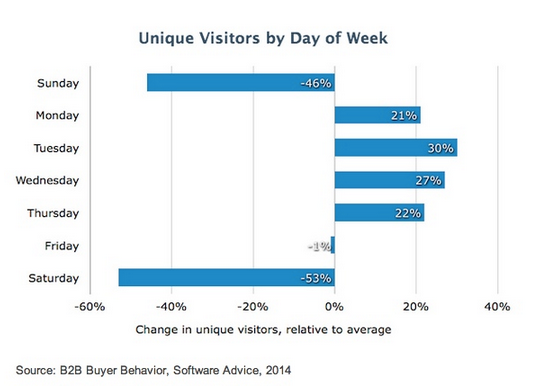Study shows, how B2B decision-makers consume vendor content
Some weeks ago, we spoke about a study that described what B2B decision makers expect to read on vendor websites. Now, a new study of 352 buyers (predominantly large businesses) from The CMO Council and NetLine shows that the majority of organizations (94%) favors to curate and circulate relevant content in their organization before finally deciding to purchase B2B solutions and services. For years, marketers thought B2B buyers and influencers alike are simply using vendor-related content from time to time.
The study makes clear that there is no real sharing structure to be made out from company to company. However, there are three main patterns that the study highlights in their results:
– From the Middle Out (35%): Execution-level executives search and find content about vendors/products and make the purchase. Senior management gets educated thorugh them why the decision was made.
– From the Bottom Up (30%): Junior or mid-level employees find vendor-related content and share their discoveries with senior management. Then they make the final decision.
– From the Top Down (29%): Senior managers find the content, then share it with lower-level managers for analysis and final purchase.

The same as with the sharing patterns, there are three key personas within the businesses who act according to their own behaviors, expectations and needs.
– Researchers: Primarily focused on new industry reports/research to inform them of advancements in solutions, trends affecting the markets, and opportunities for improvement.
– Influencers: Interested in both thought leadership found in trusted third-party channels and vendor-branded technology specifications, data sheets, and use cases. Their special interest is in summarized content, i.e. infographics, videos, and blog comments.
– Decision-Makers: Want to stay informed through broad research reports and analyst commentary. However, they expect to have access to detailed data to enable better decision-making at the tail end of the purchasing funnel.
Spot On!
The study reveals some further interesting insights. The vendor selection is major to moderate influenced by online content, find 88% of the B2B buyers and more than a third (38%) find that online content provides strategic insights and shapes the purchase decision. The content that is valued the most is research reports and studies (65%), technical spec and data sheets (50%), analyst reports (46%), whitepapers (35%) and posts on trade publishing sites (30%). The power of Google and the vendor website comes out as well: When more than two third state they start their vendor-related content sourcing with search engines and portals, it shows that the best training the marketers is to read the two B2B studies and draw some conclusion out of it for the future of your own content, PR and marketing acitivites. And if you cannot find a solution, we are happy to help…




 Spot On!
Spot On!







